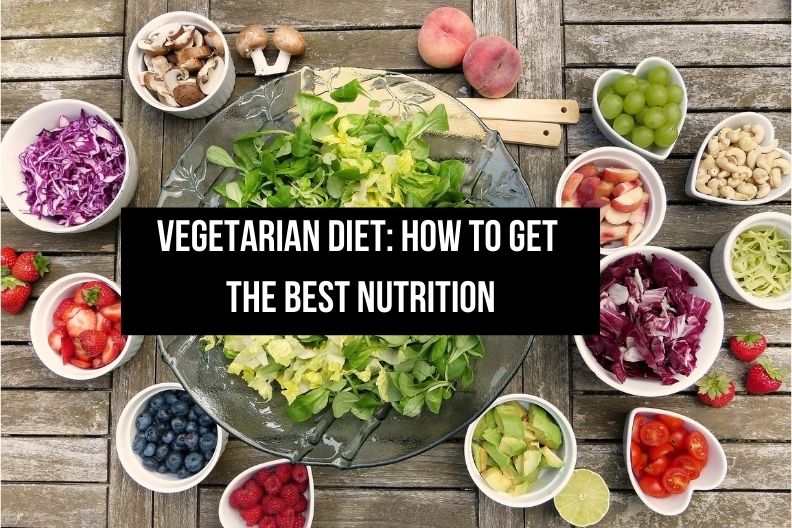This post contains affiliate links. This means I will make a commission at no extra cost to you should you click through and make a purchase. Read the full disclosure here.
Ever wondered why Vitamins A, D, E, and K are called the fat–soluble vitamins? Its because they are soluble in organic solvents and are absorbed and transported in a manner similar to that of fats. In this blog post, I will dive into the role that vitamin A plays in our bodies.
Table of Contents
Why is Vitamin A Soluble in Fat?
Vitamin A is not soluble in water. It needs some fat in the meal to enable it to be absorbed from the digestive tract and the bloodstream into tissues. Unfortunately, vitamin A and the other fat-soluble vitamins – D, E, and K – are absorbed by mineral oil. These vitamins, along with the mineral oil, are eliminated in evacuation of wastes. For this reason, mineral oil is not a desirable laxative.
What is the Function Vitamin A – A Fat-soluble Vitamin?
Here are the reasons why you should include Vitamin A in your diet:
Vision
Vitamin A is essential for good vision. The connection between vision and diet was known to the Egyptians as early as 1900 B.C.
Vitamin A helps to prevent xerophthalmia, also known as “dry eye”. Eyes become dry because the lachrymal gland, which normally secretes fluid to keep the eyes moist, does not function.
Other problems also develop. The lids stick together, becoming scabby and swollen. In advanced cases, blindness results. Styes may be a minor effect of a deficiency of this nutrient.
Vitamin A also helps prevent night blindness. It keeps drivers from being blinded by the headlights of oncoming cars. Vitamin A combines with protein, cholesterol, and other nutrients to form visual purple. This pigment is essential for the retina. When you look at the headlights of a car or
sunlight reflected on water, snow, or chrome, or when you go from a dark room to a bright one, the visual purple changes first to yellow, then to white. In the change, vitamin A is used up. The brighter the light, the faster it is used. To make visual purple, the body must draw on stored vitamin A.
Growth
Vitamin A is essential for normal growth. It was the early researchers’ efforts to determine why some animals failed to grow that led to the discovery of vitamin A.
Sherman confirmed the effect of vitamin A on growth in his study of more than 80 generations of white rats. Rats fed a diet high in vitamin A grew to full adulthood. They produced normal young. But rats fed a diet with only a little vitamin A grew to almost adult size, then stopped growing. They could not reproduce young.
Skin and Hair
Vitamin A is beneficial for the skin and hair. One of the first symptoms of a deficiency of this vitamin is rough, dry skin, possible with pimples. This vitamin plays an essential role in promoting appearance.
Defense Against Infection
Vitamin A guards the body against bacterial infections and diseases. A healthy, unbroken skin protects us from invasion of some bacteria. The outer layer of skin is called epidermis. It is composed of millions of tiny epithelial cells.
These cells also line the soft tissues of the mucous membrane of the respiratory tract. They are found in the mouth of the alimentary tract, the urinary and genital tracts, the tear glands, and all other glands and organs in the body.
When the body is deficient in Vitamin A, the cells that line the respiratory tract dry out. The mucous membrane becomes rough. The normal secretions disappear. Naturally, this lowers your ability to resist respiratory infections.
Teeth
Vitamin A helps form teeth. Poor diet and illness of the mother during pregnancy affect the development of the baby’s teeth. Poor diet may affect the baby’s teeth that are formed before birth. The epithelial cells fold inward in the gums. They form a cap over the bud of the tooth, Vitamin A may also affect the permanent teeth, which form in the bud behind the baby teeth. The final laying down of enamel occurs during the first ten months after the birth of the baby.
When there is enough vitamin A and other nutrients, the enamel is laid down in closely packed, six-sided hard prisms. This makes a smooth, attractive surface. When it is deficient, the prisms do not fit tightly together. Pits form. Food lodges in these pits and ferments. The teeth may then erode, leading to decay. About two-thirds of the pitting that occurs in poor enamel takes place during the first ten months.
Kidneys
Vitamin A helps to prevent the formation of kidney stones. Kidney stones were once so common among the poor.
Daily Requirement of Fat Soluble Vitamin A
The amount of carotene changed into vitamin A varies with the food. Cooking carrots, for instance, makes more vitamin A available. Carotene may pass directly into the bloodstream or it may be changed into vitamin A in the mucous membranes of the intestines or liver. Some ailments, such as diarrhea or liver disease, interfere with its absorption.
What Happens if You Eat Too Many Fat-Soluble Vitamins Like A?
Food does not provide too much, but supplementary vitamin pills can mean an excess of vitamin A. Some pills are quite concentrated in vitamin A. Well-meaning mothers may give their children 40 to 50 times the recommended amount daily. If this dosage is prolonged, hypervitaminosis meaning an excess of vitamins can result.
Signs of severe overuse over a short period of time include dizziness, blurred vision, and slowed growth. Vitamin A toxicity can also cause severe birth defects and may increase the risk for bone loss and hip fractures
Hypervitaminosis causes loss of appetite and changes in skin pigmentation. The skin becomes itchy and dry. There is loss of hair and bones are fragile and painful. Here is a strong reason for depending on foods, not pills, for vitamins.
Retaining The Fat Soluble Vitamin A in Food Preparation
The carotenes from which vitamin A is made are deep yellow. The vitamin itself is a colorless, odorless, needlelike crystal. It resists heat but may be destroyed by oxygen during long, slow cooking at low temperatures. Little is destroyed when it is cooked in the absence of oxygen, as in a pressure cooker. Vitamin E protects vitamin A from oxidation, an example of teamwork in nutrients. Vitamin A retains its values better in vegetables and fruits that are kept cool and moist.
Conclusion
To summarize the main premise of this article, Vitamin A is an essential nutrient and fat-soluble vitamin we all need to live. We rely on our liver to store this vitamin A and when there’s a surplus, it’ll get stored as a supplement that can be used as and when needed. The main symptoms of not having enough vitamin A include poor immune function, poor vision, and night blindness. During pregnancy, low intake of Vitamin A can lead to problems in both the mother and the baby. Gaining too much intake of Vitamin A has been linked to lung cancer in smokers and for some children too much vitamin A can cause harm.





